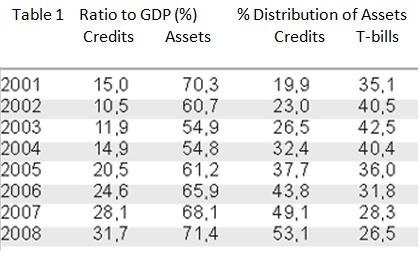Bubbling bubbles
Since the bubble that emerged in the housing market of the US has burst, we are covered by 'tiny bubbles' all around. Everyone keeps saying "bubble is growing in Turkey", "keep out; the bubble will burst", "this is the result of 'false monetary policies'" and so on...
Editors want to include a short abstract of the article and the 'keywords' on the first pages of the articles published in scientific magazines. However, some of our colleagues have just a single keyword: 'false monetary policy'. An article can certainly have one keyword; however, these 'articles' do not have anything else at all. These 'studies' are all composed solely of the repetition of the same words. In fact, we should say 'they used to have' and 'they were composed of'. Thanks to the crisis that emerged in the US, we now have a 'bubble' and the variety in the article subjects have increased: A few lines of 'false monetary policy', a few lines of 'bubble', again a few lines of 'false monetary policy', and then of 'bubble'...
All the lines are the same page after another until the conclusions page. The sole difference in the conclusion section is that the section has a headline reading 'conclusion'. It is okay, since it at least leads to variety. And at the end of the article there are 'references'. First reference: "I had told you so"; second reference "did not I tell you so"; "I told you so" and the fourth "of course that was me who told you so" (higher emphasis implying uniqueness)...
It is told that, the false monetary policies that have been implemented in Turkey since the birth of the Jesus Christ certainly created a monetary policy bubble. Everybody got indebted so high that the prices of all commodities have risen to extraordinary levels; i.e. it is a bubble in literal terms.
First column in Table 1 shows the ratio of bank credits to the GDP with year-end figures. The 2008 figure are as of September. And forgive me for not tracking the figures back to the birth of the Jesus Christ, but the earliest data is for 2001. The ratio of bank credits to the GDP is actually rising. But, wait a minute: The ratio of the total assets of banks to the GDP in 2008 is same with that in 2001. So, how can banks extend gradually more and more credits while total assets start to fall down as of 2001 and then rise again reaching the initial level in 2008?
The answer is obvious and is shown in the last two columns: Banks have started to keep a lower portion of their assets as Treasury bills. In other words, by means of the new economic program the banks restarted to perform their original function; i.e. to transfer funds to the real sector (to extend credits). After all, this is what is desired; public sector will decrease its budget deficit and gradually start to lower borrowing. By this way, both the resources allocated for the real sector will increase and real interest rates will fall down. In fact there is a lot more to say. For instance, the current credit volume is highly insufficient for Turkey seeking to attain high growth rates. But we will continue later. What a 'bubble'!

This commentary was published in Radikal daily on 05.01.2009




